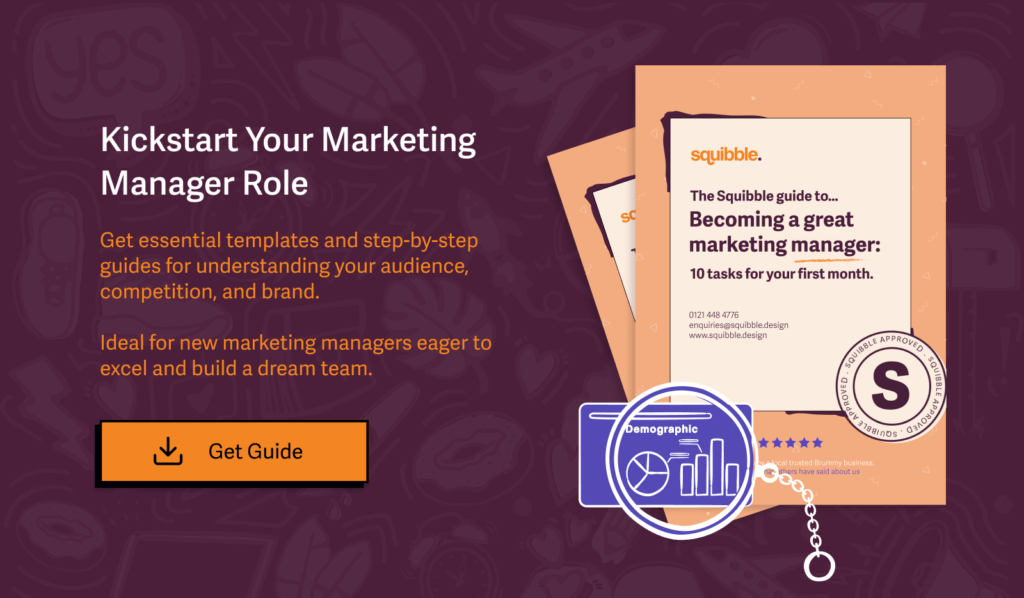Whether we’re iterating your current content strategy or starting from scratch, a strong content strategy is the backbone of really good content for any business. And we know how important content is these days, especially when integrated with an effective web design.
And we know how important content is these days.
Today, we’re diving into:
- What content strategy is
- The difference between a content calendar & a content strategy
- The steps to take to build your content strategy
Let’s go!
What’s content strategy?
A content strategy is the planning, creation, publication, management & governance of content.
And a great content strategy will attract & engage your target audience, meeting their needs while driving the business & marketing goals you’ve set.
Here are some examples of diversifying your content strategy based on your business goals.
| Business goal | Content strategy focus |
| Increase brand awareness | Focus on SEO to increase your website’s visibility & drive traffic |
| Drive leads | Focus on educational content to build up mailing lists |
| Build a community | Focus on creating initiatives to engage with your audience to foster that community feel |
The difference between a content strategy & a content calendar
There’s a common misconception that building a content calendar is the same as developing a content strategy. So let’s clear that up!
Don’t get us wrong, they both serve a purpose but these purposes are very different.
Your content strategy is the direction you want to take your content in. Whereas your content calendar is the structure of delivering the content. Here’s a breakdown:
Content strategy:
- High-level plan for goals, metrics, target audience, messaging, channels & your approach
- Comes at the start to inform content creation, channel selection & other focuses
Content calendar:
- Your schedule for executing your content strategy, aka your action plan
- Comes after the strategy is defined

Building your content strategy
A strong content strategy has 7 building blocks. And we’ve broken each one of them down for you so you can start building out your content strategy.
We’ve popped them in order too so you can work through the list.
#1 Your goals
Think about 3-4 content marketing goals you want to achieve. Ensure they align with your overall marketing goals & high-level business goals.
#2 Your target audience
Speak to customers & non-customers. Dig into pain points, desires & goals related to your product or service.
These conversions will come in handy in the following couple of steps too so prepare well.
#3 Market & competitive research
Discover what businesses your customers see as alternatives to you & look at what they do differently to you. You can do this by asking your customers & non-customers what alternatives they know of or have used.
#4 Ideal channels
Again, in the above conversations, find out which channels your audience is active on & where they look for solutions to their pain points.
Choose 1-2 channels to kick things off, you don’t want to spread yourself too thin to begin with.
#5 Content calendar
Build out an overall content calendar which holds all your content, visuals, channels & everything in between, we use Notion for ours.
This should be accessible to all those involved in the content planning process. And you can build this up over time based on your findings & how things work.
#6 Repurposing efforts
Make the most of your content. When you’re creating a piece of content, ask yourself, “How can we share it across multiple channels in different ways & still make an impact?”
This also comes into play with past content, if it performs well, share it again & again!
#7 Measuring success
Concerning the goals you set in step #1, think about how you’re going to measure the success your content is producing.
Give each goal a metric to measure & set some tangible KPIs alongside them.
And voila, you’ve started building a content strategy that’s going to deliver content success!
But… your content strategy is never finished.
You should always be building upon it based on insights from the work you’re doing. Develop your strategy by:
- Running A/B tests
- Experimenting with formats
- Trialling different channels (within reason)
Building a strong content strategy takes time, organisation & creativity. It shouldn’t be easy but it will be rewarding.
TL;DR
- A content strategy is the direction you want to take your content in. Whereas a content calendar is the structure of delivering the content.
- A strong content strategy has 7 key building blocks that are all needed for success.
- A content strategy is never finished, you need to continue building upon it constantly







